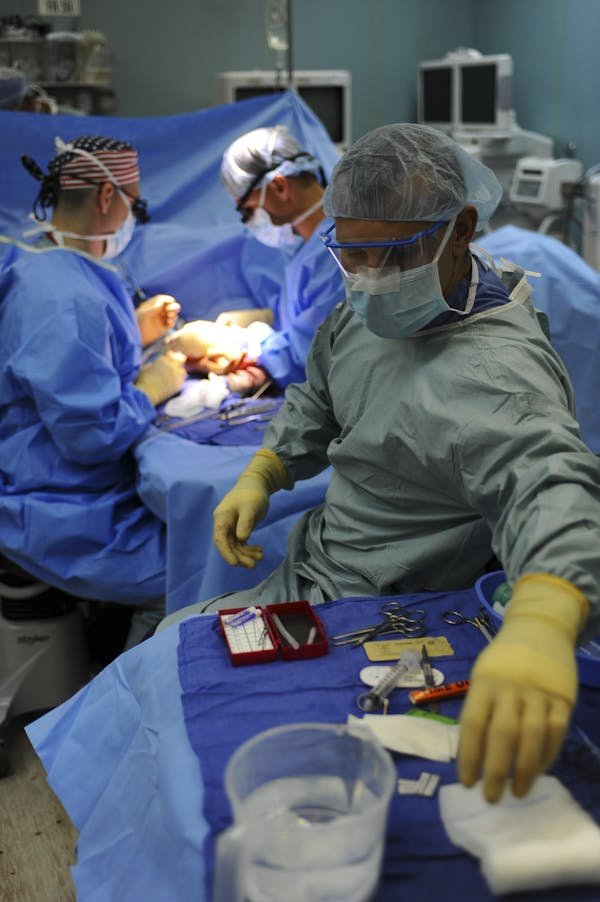Follow us and share.
Common Surgical Procedures: General Surgery and Its Most Frequent Interventions
Discover the most common surgical procedures in general surgery, their indications, techniques, and postoperative care for a safe recovery.

General surgery encompasses a wide variety of surgical procedures intended to treat diseases and conditions affecting various organs and systems of the human body. Some of the most common procedures include interventions on the digestive system, hernia repair, and tumor removal. These surgeries can be performed traditionally (open) or using minimally invasive techniques, such as laparoscopy, which allow for faster recovery and fewer complications. The choice of surgical technique will depend on the patient's diagnosis, the severity of the disease, and the recommendations of the medical team.
Furthermore, the evolution of medical technology has allowed many of these procedures to become less invasive, with shorter hospitalization times and more comfortable recovery for the patient. Access to specialized surgeries has also improved thanks to advances in anesthesiology and the implementation of accelerated recovery protocols.
📌 Common Surgical Procedures in General Surgery
Appendectomy
Appendectomy is the removal of the appendix due to a acute appendicitis, an inflammation caused by a blockage that can lead to serious infections. It is one of the most common emergency surgeries and can be performed by open surgery either laparoscopic, depending on the patient's condition. Recovery is usually rapid, although it is essential to follow medical recommendations to avoid complications such as infections or abdominal adhesions.
Cholecystectomy
Cholecystectomy is the removal of the gallbladder, generally due to the presence of gallstones that cause pain, inflammation and infections. It is mostly performed by laparoscopic approach, which reduces hospitalization time and speeds patient recovery. In some cases, open surgery is still necessary, especially when complications such as severe inflammation or advanced infections exist. After surgery, some patients may experience temporary digestive difficulties, so a low-fat diet is recommended during recovery.
Hernioplasty
Hernioplasty is the surgery intended to repair hernias, like the inguinal, umbilical or femoral. It consists of reinforcing the abdominal wall with a synthetic mesh or sutures to prevent tissue from protruding again. It can be performed using open or laparoscopic techniques. Untreated hernias can enlarge and cause complications, such as organ entrapment, which can lead to a medical emergency. The choice of surgery will depend on factors such as the patient's age, the size of the hernia, and the existence of other health conditions.
Bowel Resection
This procedure consists of the removal of a portion of the intestine, usually to treat intestinal obstructions, inflammatory bowel disease (IBD), or malignant tumors. Depending on the case, a intestinal anastomosis (reconnection of healthy segments) or a temporary or permanent ostomy. Intestinal resections can require long recovery periods and, in some cases, dietary and lifestyle modifications. For people with conditions such as Crohn's disease or colon cancer, this procedure can significantly improve quality of life.
Mastectomy
Mastectomy is the breast removal, indicated mainly for the treatment or prevention of breast cancer. Could be total, when the entire mammary gland is removed, or partial, when only the area affected by the tumor is removed. In some cases, a posterior breast reconstruction to improve aesthetic appearance. Additionally, there are advanced techniques, such as skin- and nipple-sparing mastectomy, which allow for more favorable aesthetic results. The decision on the type of mastectomy to perform will depend on the type of cancer, its stage, and the patient's preferences regarding reconstruction.
📌 Recovery and Postoperative Care Considerations
Recovery after surgery depends on the type of procedure, the technique used, and the patient's health. Some general precautions include:
- Pain control: Use of painkillers as prescribed. In some cases, techniques such as nerve blocks or epidural painkillers may be used to improve patient comfort.
- Surgical wound care: Keep the area clean and dry to prevent infection. In laparoscopic surgeries, the incisions are usually small, which reduces the risk of infection and facilitates healing.
- Moderate physical activity: Avoid strenuous exertion and follow your surgeon's recommendations. Early mobilization reduces the risk of complications such as deep vein thrombosis.
- Proper diet: During digestive procedures, a progressive diet is key to avoiding complications. Some patients may require nutritional supplements to aid recovery.
- Medical follow-up: Maintain postoperative checkups to assess progress and detect any early complications. Depending on the procedure, imaging studies or laboratory tests may be necessary to ensure proper recovery.
💡 The Importance of General Surgery in Modern Medicine
The common surgical procedures In general surgery, surgical procedures have evolved significantly thanks to minimally invasive techniques and advances in perioperative care. These procedures not only allow for the effective treatment of serious illnesses but also improve patients' quality of life. Reduction in recovery times and decreased postoperative pain have been fundamental advances in surgical medicine.
Furthermore, education about the different types of surgeries and their postoperative care is essential for patients to make informed decisions about their health. General surgery continues to advance with new technologies, such as robotic surgery and image-guided navigation, which are transforming the way these procedures are performed and optimizing clinical outcomes.



